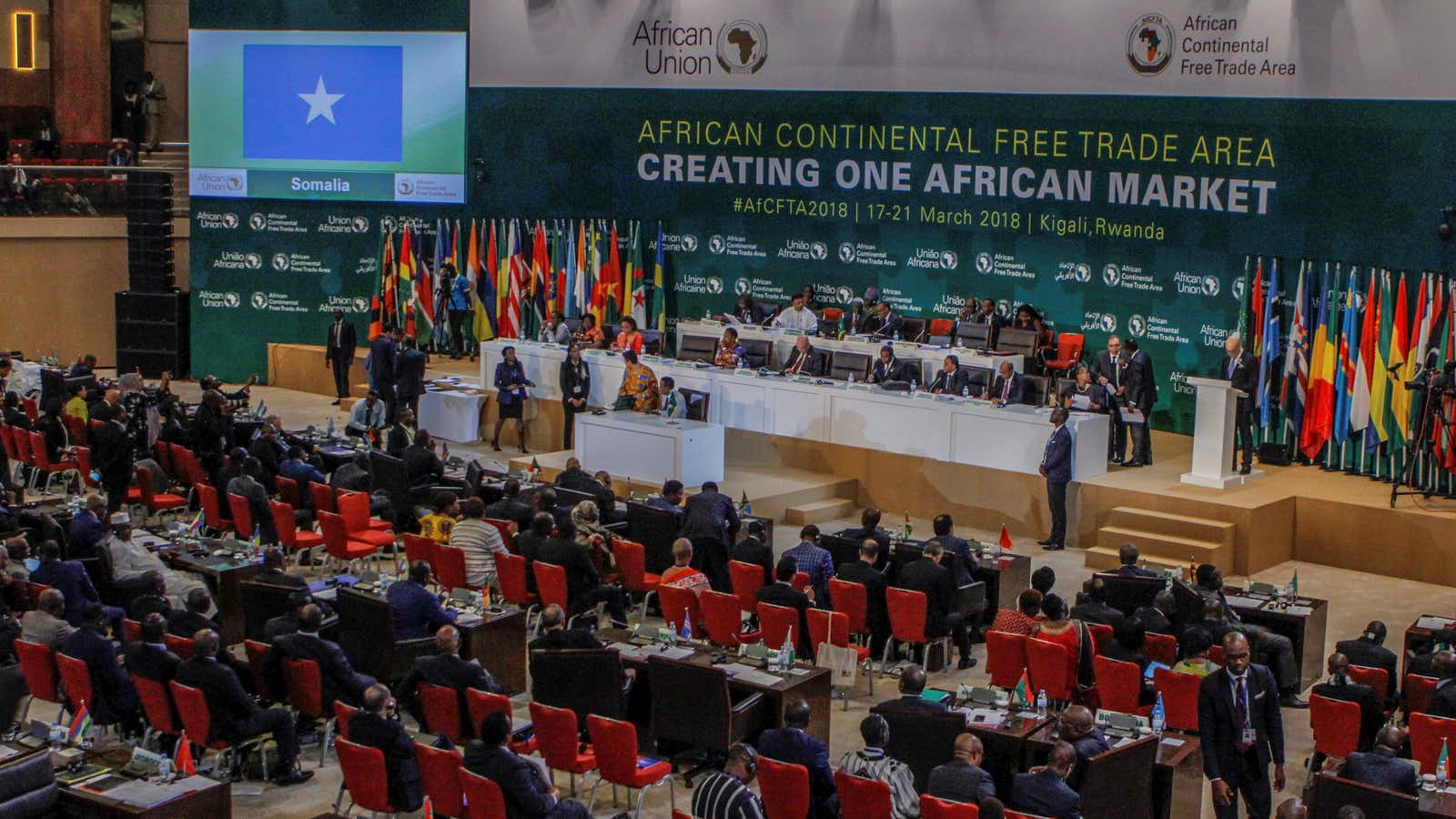African leaders have taken a major step towards a long-held dream of the African Union: free trade across the continent.
Yesterday (March 21), in Kigali, 44 leaders signed an agreement to create the African Continental Free Trade Area (AfCFTA). If ratified by each country, AfCFTA will become one of the world’s largest trading blocs. But there was a glaring omission—Nigeria, Africa’s largest economy and most populous country, as well as a host of others did not sign the agreement.
The potential upside of a free trade area across the continent is significant as it will create a single market of up to 1.2 billion people and a collective GDP of more than $2 trillion. The United Nations Conference on Trade and Development also predicts that reducing intra-African tariffs—one of the conditions of AfCFTA— “could bring $3.6 billion in welfare gains to the continent through a boost in production and cheaper goods.” If fully adopted, the United Nations Economic Commission for Africa says intra-African trade can increase by 52% by 2022 when compared to 2010 trade levels. That represents major growth as the current reality is stark with intra-African trade making up only 16% of total trade on the continent in 2014.
But amid the cheers of achievement in Kigali, Nigeria failed to sign the AfCFTA agreement or the Kigali Declaration, a document on the establishment of the AfCFTA. In a turnaround 48 hours before he was due to travel to Kigali, Nigeria’s president Buhari cancelled the trip saying the country needed “to allow more time for input from Nigerian stakeholders.” The decision is believed to be due to pressure from trade and labor unions.
For its part, South Africa, Africa’s most advanced economy, signed the Kigali Declaration but did not sign the actual free trade agreement itself saying it needed more time to “follow constitutional and internal processes” to sign the agreement. Other countries that didn’t sign the AfCFTA are Botswana, Lesotho, Namibia, Zambia, Burundi, Eritrea, Benin, Sierra Leone and Guinea Bissau.
Getting connected
Even though 44 countries signed up for AfCFTA, the agreement will have to be ratified by national parliaments of signatory countries after which the free trade area will come into effect. Before then though, there’s a lot of work to be done as a free trade area across Africa will likely be held back by current logistical pitfalls.
A 2017 report (pdf) from London School of Economics’ International Growth Centre suggests that the promise of free trade will likely be hindered by the costs of moving goods within African countries and between neighbors. In other words, African countries need to become better connected not only via being signatories to a treaty but also through better road and rail networks. Even within individual countries, poor road networks pose a problem as Quartz has previously reported.
As is likely in the case of DRC, 2015 research estimated the cost of transporting goods could be up to five times higher (per unit distance) in some sub-Saharan African countries when compared to the US. In Ethiopia it’s thought to be 3.5 times while in Nigeria it’s said to be 5.3 times higher.
There’s been some recent progress though as, in January, 23 African countries launched the Single African Air Transport Market, an initiative to boost connectivity and reduce the cost of travel between African countries.
